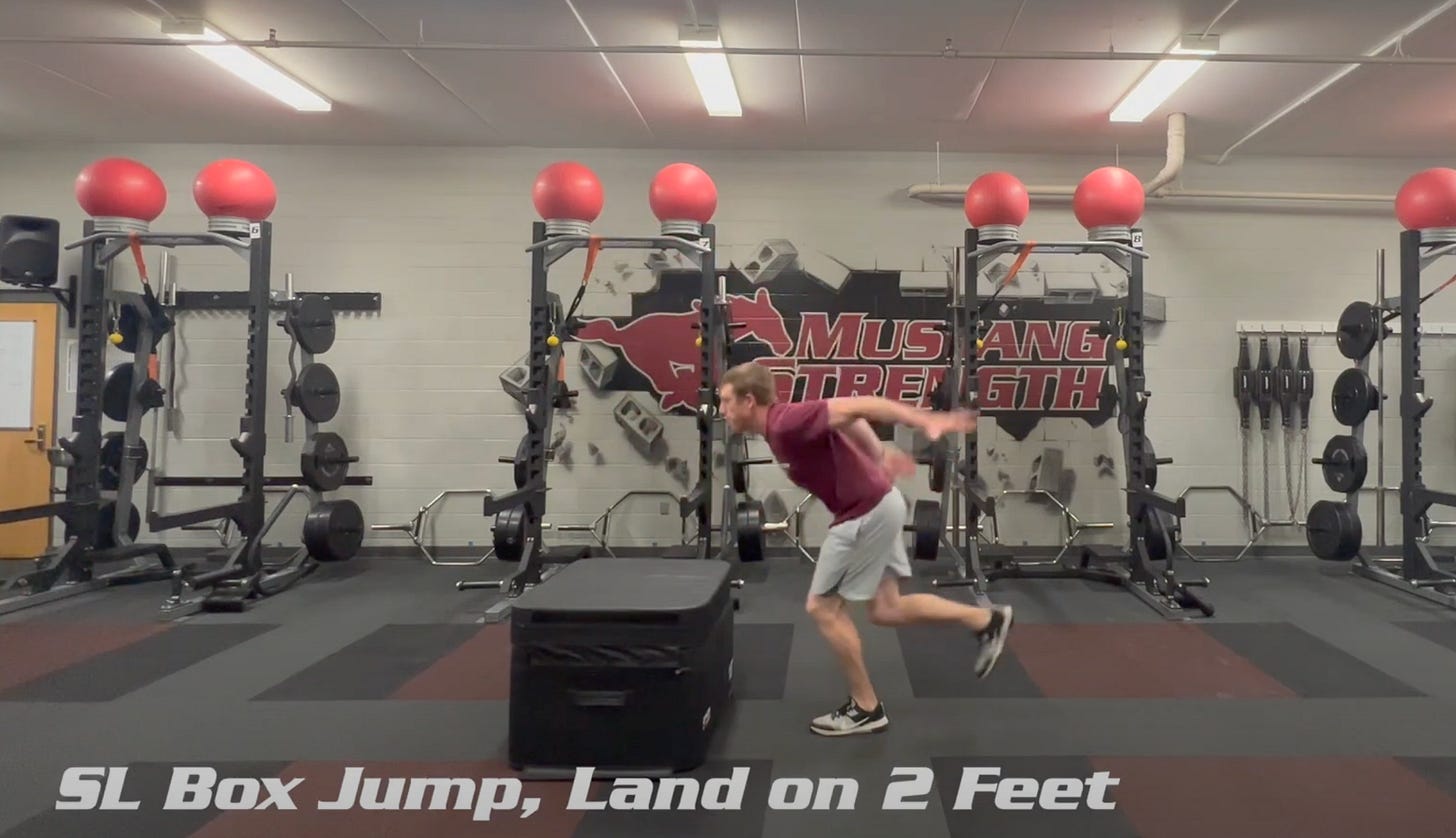Plyo Mistakes Coaches Make: What to Fix, What to Stop, and What to Start Doing
#32 – Strength & Speed Coaching – Pursuing Your Best ⚡
We’ve spent the last few issues talking about how to build plyometrics with purpose—from foundational jumping mechanics to smarter programming and progressions.
Now it’s time to get real:
Even good coaches can accidentally make plyometric work less effective (or even counterproductive) if we aren’t intentional.
This newsletter is about troubleshooting and tightening your jump/plyo training.
We’ll walk through:
Common mistakes that limit progress (or increase injury risk)
Practical fixes you can apply immediately
A simple checklist to audit your own plyometric program
Let’s clean up the clutter and sharpen the impact.
Where Plyometric Training Goes Wrong
You don’t need a new set of drills to improve your program—you need better execution of what matters most.
Here’s where plyo programs usually break down (and what to do instead):
Mistake #1: Chasing Volume Over Intent
The Problem:
More jumps = better athletes, right?
Wrong. High ground contact numbers without quality movement just create sloppy patterns and fatigue.
The Fix:
Focus on low volume, high quality—fewer jumps, sharper reps.
Limit ground contacts (e.g., 20–30 per session).
Cue every jump with clear goals: "explode," "stick," "bounce," "stay tall."
Mistake #2: Skipping the Basics Too Soon
The Problem:
We want athletes doing "cool" drills—depth jumps, elaborate hurdles—but they can’t even land properly yet.
The Fix:
Start simple: posture, landing, stiffness.
Don’t progress until takeoff and landing mechanics are consistent.
Remember: You earn your way into advanced plyos.
Mistake #3: Poor Pairing with Sprint & Strength Work
The Problem:
Plyos are often stacked after heavy squats, gassers, or random conditioning—not when athletes are fresh.
The Fix:
Program plyos early in sessions—right after warm-up, before sprint or lift work.
Match them to your block goals:
Heavy strength block → focus on simple, powerful jumps.
Sprint block → add reactive plyos.
Mistake #4: Random Jump Selection
The Problem:
If your jump drills don’t match the movement demands of the sport—or the readiness of the athlete—you’re wasting opportunity.
The Fix:
Categorize jumps by plane (vertical, lateral, horizontal) and intensity (extensive vs. intensive).
Build progressions: stick → bounce → reactive sequences.
Prioritize what transfers to the field/court (not just what looks cool).
Mistake #5: Ignoring Recovery and Overuse Risk
The Problem:
Jumping is intense—especially on tendons, joints, and connective tissue. Poorly managed plyos can fry athletes over time.
The Fix:
Track exposure: monitor weekly ground contacts across sport + training.
Rotate types of jumps (vertical focus one day, lateral the next, etc.).
Cycle intensity: mix lower-impact (extensive) plyos with high-intensity (intensive) blocks to protect joints and tendons over time.
Quick Plyometric Program Audit:
Use this checklist to tighten your plyo programming:
Are jumps placed early in the session when athletes are fresh?
Are we matching plyos to the sprint and strength goals of the phase?
Are athletes progressing only when posture, landing, and stiffness are solid?
Are we using low volume, high-intent reps (instead of random reps)?
Are we covering different planes: vertical, horizontal, lateral?
Are we managing weekly contacts to avoid overuse?
Are athletes clear about the purpose of each jump?
If you can check off most of these—you’re ahead of 90% of programs.
If not?
No shame. Just adjust and move forward.
Progress—not perfection—is the pursuit.
Final Thoughts
The best plyometric programs are built on simple ideas, executed with ruthless attention to quality.
Not more drills.
Not more chaos.
Just the right jumps, at the right time, for the right reasons.
That’s how you build durable, explosive athletes who can apply their strength to sport—and stay healthy doing it.
What’s Next?
That wraps our 4-Part Plyometric Series!
We’ll get rolling with our next 4-part series soon—it’s going to be another practical, field-tested topic you can apply right away.
(If you have a topic you’d love to see, reply and let me know. I’m always trying to expand my list!)
Need Help Cleaning Up Your Plyometric Program?
I offer consulting for PE teachers and Strength & Speed coaches who want to:
Tighten up plyometric progressions
Build jump systems that actually transfer to sport
Align sprint, strength, and plyo work into one cohesive plan
If you’re ready to take the next step, just reply or shoot me a message.
Let’s build something great.
Until then, keep pursuing excellence.
— Preston ⚡️
Previous 4-Part Series Topics:
Paid Subscriber Resources Preview:
Upgrade your subscription to Pursuit PE to get access to these resources ⤵
Plyometric Program Audit Checklist (Printable self-review tool)
Plyometric Categorization Grid (Organize jumps by purpose and plan smarter)
Sample 2-Week Plyo Micro-Dose Plan (Plug-and-play structure for busy coaches)
Not a paid subscriber yet? Upgrade to unlock the full breakdown and exclusive resources!
Keep reading with a 7-day free trial
Subscribe to Pursuit PE to keep reading this post and get 7 days of free access to the full post archives.







